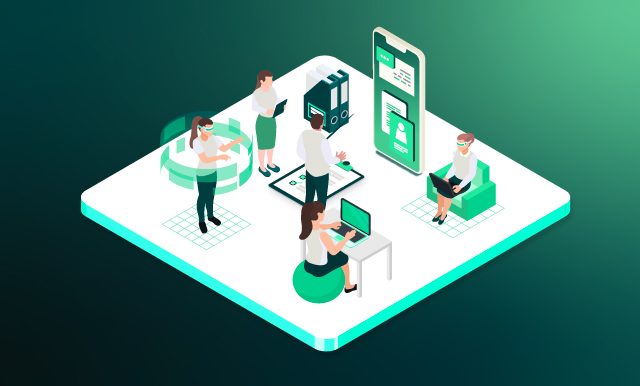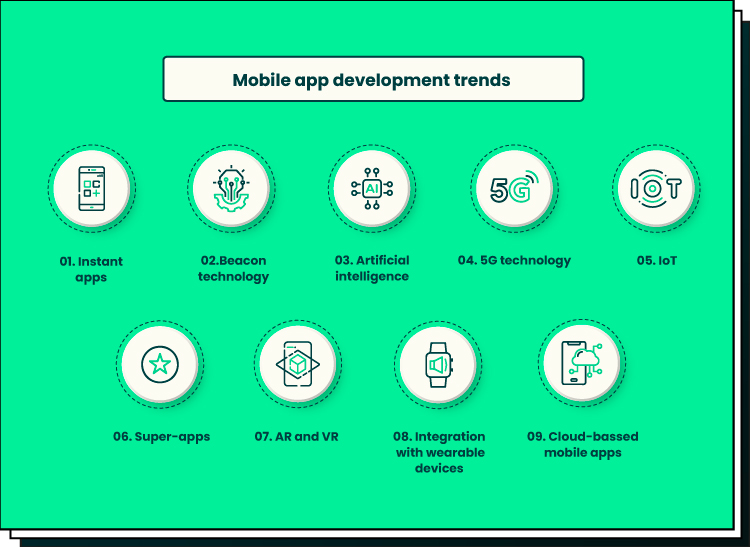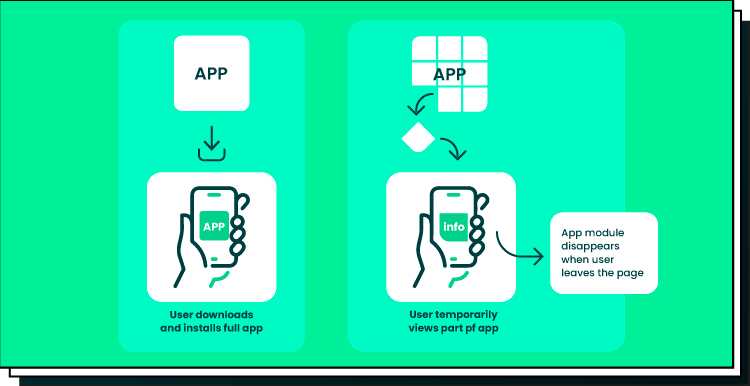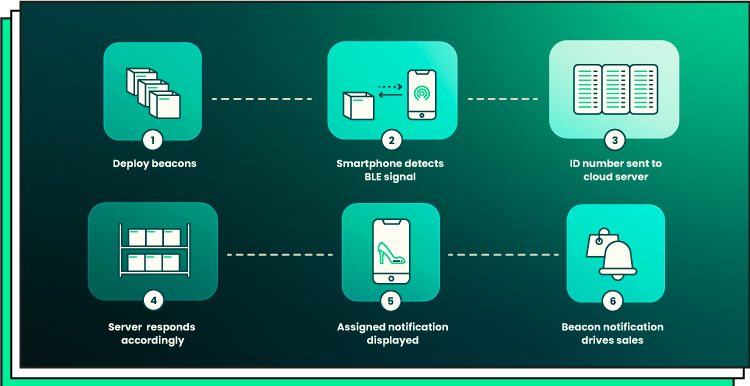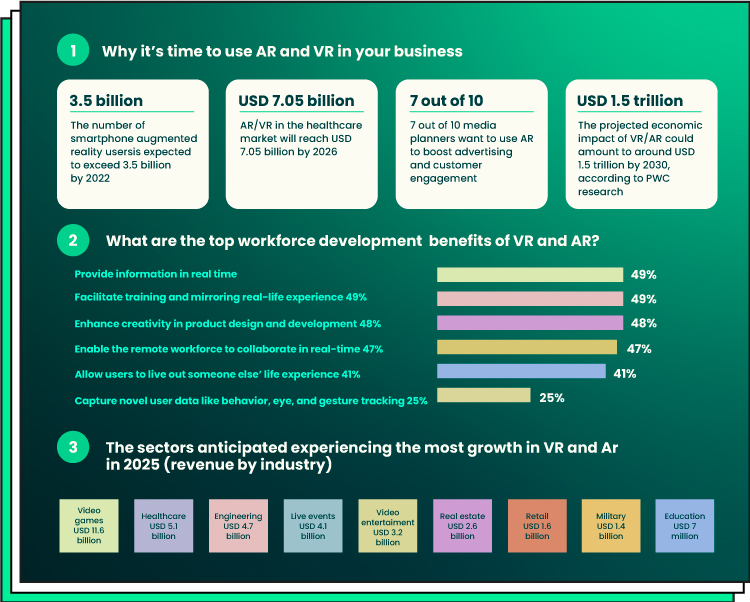Statistics show that the future of apps is more than promising. The mobile app industry keeps growing, and app trends keep expanding. By 2025, the industry is forecasted to reach a yearly revenue of $613,433, with games and social networking apps taking the biggest share.
As the mobile app trends showcase, people have started to spend more time on their mobile phones rather than on other devices. 88% of that time is spent on applications, which should be taken into account by businesses planning to launch their trending apps in the near future.
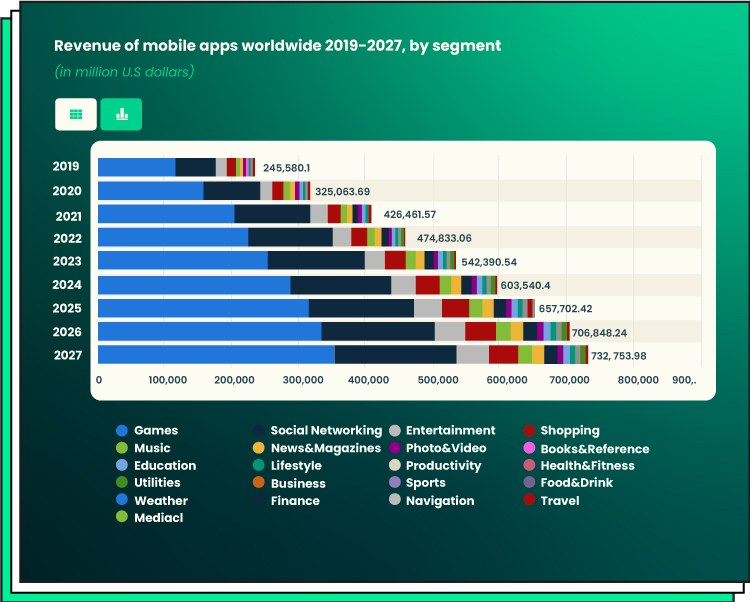
Representing the software development market, our team also witnesses the exponential growth of trending apps. More and more clients refer to us with the request to create an application for their business. Most often, these are mobile or software apps for internal use or white-label applications that promote their services or products.
If you are wondering whether to invest in application development and what interesting features to integrate into your product, keep reading this piece. Here, we discuss the top mobile app trends and the future of applications and instruct you on your first steps to entering this market.
Why Is All This Important?
Before we discuss mobile app landscape trends, let’s briefly outline the purpose of this article and provide you with some context. As you see from the figures above, the app development market is a rapidly growing area. And it’s no wonder that it is.
Portable devices like phones or tablets are with us for most of the day. For people, there is no point in getting back to their homes or offices to turn their PCs on and start looking for the data or services they need. Instead, it’s far more convenient to take their phones out of their pockets and reach their goals in a matter of minutes or even seconds.
However, the rapidly growing areas, such as trending app development, are highly competitive as well. More and more businesses see the mobile app development industry’s potential to accelerate their growth and increase revenue. That is why today, building an app for the sake of building it is not enough if you want to create a truly competitive and engaging product.
To succeed in the mobile app development industry, you should be aware of the latest mobile app marketing trends shaping the future of apps. This will help you integrate the features and functionality into your product that will impress a user and encourage them to choose you over the competitors.
Below, we outlined the top mobile application development trends in 2023 and the trends affecting future apps. In the next sections, we will discuss each one in more detail.
9 App Development Trends to Mind When You Create Your Own Solution
Let’s start with the factors shaping the future of apps. Their future hugely depends on the tech advancements achieved in the sphere of smartphone, tablet, and wearable device development. Today, the total number of apps in Apple’s App Store and Android’s Google Play reaches 8.9 million.
Another factor influencing mobile app development trends is digital transformation. With the emergence of new technologies like AR, AI, or VR, businesses must adapt to the changing market conditions and grasp the power of these innovations. As soon as they realize the potential new technologies have, they will easily gain a competitive advantage in the market and invent the features that will differentiate them from the rest of similar products.
1. Instant apps
Building an instant app is a new app trend. Instant apps are mobile applications that deliver the required functionality without the need to download and install them. This makes them very convenient in cases when a user wants to get the service instantly and has no time to download an app.
For example, mobile app developers can create an instant scooter rental app. Instead of downloading the app, a user should just approach the scooter, scan the QR code on it, make a payment, and rent the vehicle in a few seconds. Some famous examples of instant apps include Spin, Skyscanner, Marvel Strike Force, and more.
Why this technology? Before considering this technology, conduct research on the market you are going to enter. If it’s a highly competitive area and there are many apps alike, it may be hard for you to encourage end users to download your app. If so, consider building instant solutions that function as on-demand apps, require minimal user effort, and ensure quick access to the products or services you offer.
2. Beacon technology
Beacon technology will be an integral part of the app’s future in retail, hospitality, and entertainment businesses, as well as healthcare. Beacons work using Bluetooth technology. They are physically installed in shops, healthcare, or other facilities and transmit data via Bluetooth when a compatible mobile device is detected.
Beacons use the location-based searching method and transmit data to the customer’s device once they are in close proximity to the place where beacons are installed. This technology is very helpful in proximity marketing and retail, and is one of the top mobile app marketing trends. As beacons track the location of clients within the store, they also help businesses detect the high-traffic and low-traffic areas of their shops.
Why this technology? Beacon technology may be interesting for you if you own physical stores and plan to build an app for your business. The insights gained from Beacon’s performance can help you better understand how to rearrange the products on product shelves, increase personalization via sending relevant notifications, improve advertising efforts when your customers walk by your store, and more.
3. AI and ML
Artificial intelligence and machine learning have become the driving forces of innovation in the mobile development market. These technologies facilitate user experience, enable process automation and insightful analytics, increase efficiency, and much more. They are implemented in trending apps and applied in various industries, from banking and agriculture to healthcare and retail.
Why this technology? AI and ML drive the future of apps. App developers integrate them into many technologies, including voice translators, voice assistants, smart cameras, and text detection etc. AI and ML facilitate data processing and are capable of real-time solution generation, which is a vital characteristic for time-dependent areas like banking or ecommerce.
Forbytes has rich experience in artificial intelligence development, deployment, and integration. One of our recent projects showcases ChatGPT integration for a big ecommerce client:
4. 5G technology
Seemingly, 5G technology will form the ground for growing mobile app trends. It’s the fifth generation of wireless data transfer technology with a speed of up to 100Gb per second. By shifting from LTE to 5G, app users can increase the loading speed by 10 or even 100 times. The processes that usually take minutes to complete will take seconds.
Why this technology? When creating a trending app, you should consider 5G in mind. A gradual shift from LTE technology to 5G will increase the demand for highly performant and fast-loading solutions. This should be taken into account by your app development team when you decide on the features and functionalities of your product.
5. IoT
Internet of Things (IoT) is the thing that frequently comes to mind when we talk about mobile app trends and the future of apps. There’s a high possibility that you have at least one app downloaded on your phone that is connected to IoT devices. This, for instance, can be an app activating your coffee machine or an application for your robot vacuum or smart TV. As Frost & Sullivan reports, by the end of 2023, the number of IoT-connected devices will grow to 41 million, marking an 18% growth compared to the previous year.
Such growth will increase the demand for IoT apps. IoT, which stands for the Internet of Things, is a relatively new concept of information technology. It covers smart devices, sensors, applications, and approaches to software engineering that allow for the creation of a special communication network connecting all system components.
This new app trend is related to the concept of smart building. With smart home technology, you can control all your tech devices, appliances, and equipment via a single IoT application. The list of devices can be diverse, from smart doorbells, home security systems, and voice assistants to smart thermostats, coffee machines, smart refrigerators, and more.
Why this technology? The number of smart devices in the average household is increasing. Technology is getting smarter, and people get the chance to control it all via their devices. Creating an application for IoT can be the chance to successfully enter the market and gain more competitive power compared to building an average app. The challenge will be to take a deep dive into the niche to discover what new devices appear and how you can improve user interaction with these devices with your solution.
6. Super apps
You’ve probably witnessed how world-renowned businesses started to add new services to their platforms, trying to build apps of the future. Famous companies offering ride-hailing services started to offer delivery services as well. Top social media apps began to offer new features for businesses and content creators. The examples of super apps are numerous, including WeChat, Carrem, Rappi, and others.
Super apps are mobile or web applications that offer a range of services on one platform. By using such an app, you can purchase products and services, educate yourself on service-related topics, communicate with your friends and service providers, and more. Super apps offer rich functionality and thus require more support and maintenance effort from the team. To get a quality and bug-free solution, choose a software engineering team with rich experience and diverse competencies.
Why this technology? By integrating many services into one solution, you will increase the volume of time users spend on your application. Also, you will follow the top mobile app trends and satisfy more client needs, which will have a positive impact on user conversion and client satisfaction rate.
Forbytes is a software development partner having 12+ years of experience. We can help you with app development of any complexity and scope.
7. AR and VR
Augmented Reality (AR) and Virtual Reality (VR) technologies are not new to the app development market, but they play a crucial role in determining the top mobile app trends. These technologies are extremely popular in the gaming industry and have recently started to gain popularity in healthcare, education, retail & ecommerce, and real estate industries.
Why this technology? With the help of AR/VR, ecommerce clients can enhance their experience and try on virtual items to decide if they want to make a purchase. This can boost online sales for businesses selling goods that are hard to sell distantly. For example, it may be hard for a user to decide what color of sofa will better fit into their living room. With an AR app for retail, they can visualize how the purchase will look and decide on the best size, color, form, etc.
VR and AR-powered mobile app trends enhance gaming as well, delivering more engaging experiences. With the help of Augmented and Virtual Reality, people can create a shared space where they will participate in events, cooperate, use virtual tools to imitate real experiences, etc.
8. Integration with wearable devices
Smartwatches, fitness trackers, Bluetooth headsets, and web-enabled glasses fall into the category of wearables. A good example of a wearable device known to everyone is the Apple Watch. Such a device is used to instantly access crucial app data, track and analyze user activity, facilitate sports activities, track health metrics, and more.
The integration of applications with wearable devices is a mobile app development trend that turns white-label solutions into the apps of the future. Typically, the apps displayed on wearables are simplified versions of full-scale mobile apps. They offer access to crucial functionality, which makes such apps very convenient for the appreciators of wearable technology.
Why this technology? Consider integrating your app with wearable devices if you are building a sports & nutrition or healthcare app. If your trending app supports wearables, it will increase user engagement, add more convenience to the client experience, and give you more competitive power.
9. Cloud-based apps
Cloud-based technologies are definitely affecting the latest mobile app development trends. They bring many benefits to the software engineering market and increase the performance, security, and availability of software solutions. The top cloud-based apps include Google Drive, Dropbox, Asana, and others.
Why this technology? By following the cloud-based technology trends, you can make mobile development much easier and more affordable. Instead of spending much time managing the app’s server, the development team will leverage cloud technology and optimize the project effort. The time and money saved with the help of the cloud can then be spent on creating new features and functionality.
What Are Your Next Steps?
In this article, we discussed everything you should know about the top mobile app trends and the future of apps. Now, let’s guide you on how to create the apps of the future!
If you have no software development team in-house, your first step should be selecting a reliable software development partner. A good idea is to refer to outsourcing services. Because of the difference in the economic conditions of each country, outsourcing can help you compose a skilled software development team at an affordable cost.
Forbytes is a software development partner offering outsourcing services for Europe and the US. We have 3 offices in these regions and employ more than 100 professionals in the sphere of information technology and software development. Our team can help you with product development for any sphere and of any complexity. We know everything about app development in 2023 and offer flexible cooperation, adjusting the project to the client’s budget, requirements, and needs.
Contact us for a free consultation where we will meet each other, discover your business case and needs, and discuss the next steps on your way to creating a relevant and innovative application.
